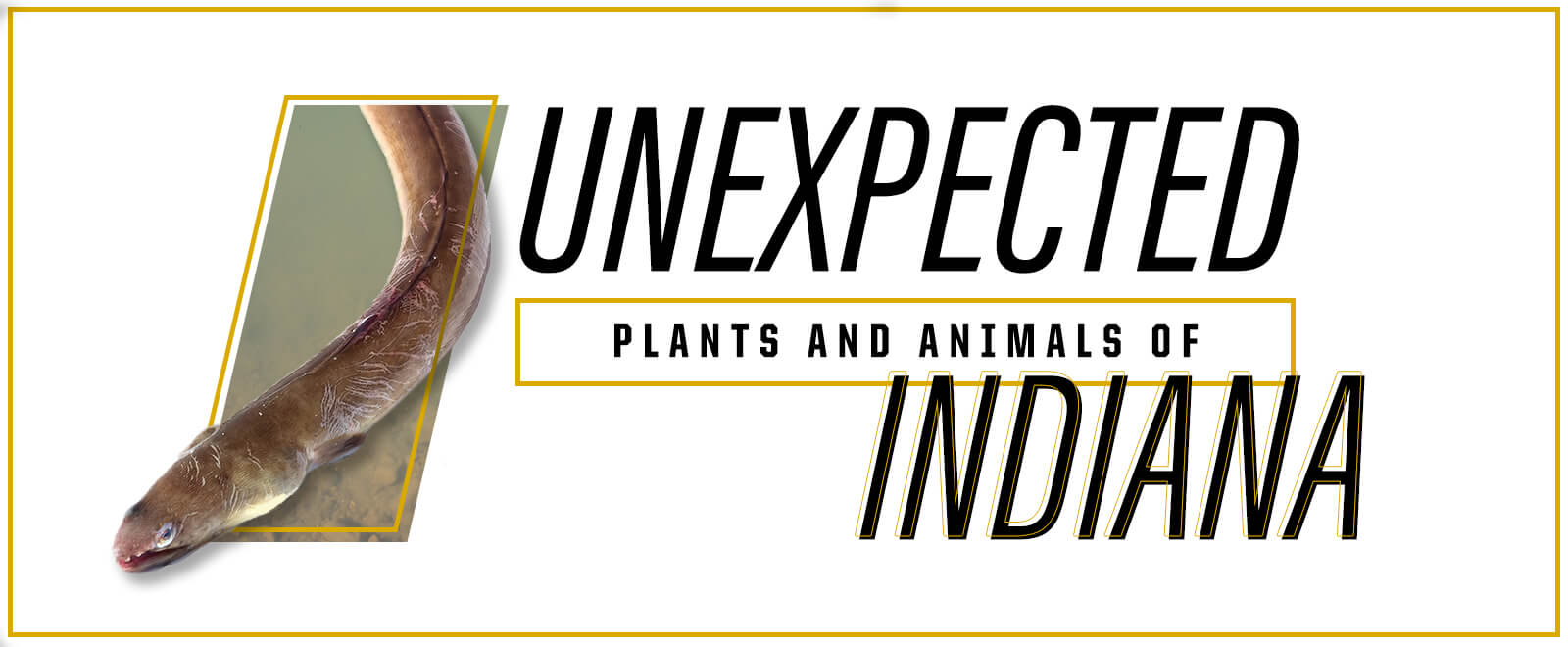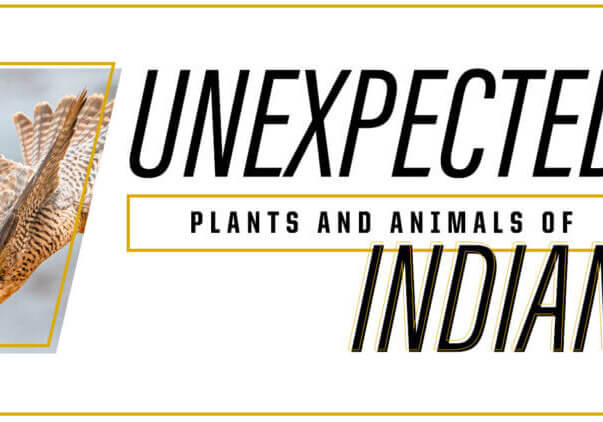FORESTRY AND NATURAL RESOURCES
Unexpected Plants and Animals of Indiana: American Eel
Story by Chad Campbell
June 25, 2021
The lives of Indiana’s American eels start and usually end more than 1,000 miles away in the saltwater of the Atlantic Ocean. The eels may journey as far north as Iceland or as far south as Venezuela. With such a wide variety of habitats, an American eel rarely feels like a fish out of water. Even when they are traveling out of the water.
American eels are born in the Sargasso Sea, a region of the Atlantic Ocean that contains much of the Bermuda Triangle. Scientists are yet to observe where in this area the eels spawn.
Upon hatching, American eels float around as flat, transparent larvae. Largely at the mercy of the currents, the eels drift toward the Atlantic coast. The journey can take over a year.
When they near the shore, they metamorphose into their second of five stages. At this age, they become cylindrical and reach four inches in length.
In the estuary waters where rivers meet the sea, American eels enter a juvenile stage. Their pigmentation changes causing them to lose their transparency. At this point, environmental factors and population density determine the sex of the eel.
Females migrate upriver while the males stay close to the coast. Consequently, only female eels are found in Indiana. The eels that reach Indiana travel north along the Mississippi River. They can even travel on land for short distances when faced with obstacles.


American eels can reach five feet in length during the fourth stage, which lasts up to 40 years. In this phase, they are nocturnal, bottom-dwelling predators that rely on their acute sense of smell.
“American eels are opportunistic hunters,” explained Reuben Goforth, associate professor of aquatic ecosystems. “Their flexibility gives them lots of options when seeking their prey. They primarily eat invertebrates like aquatic insects and crayfish, but if they come across a small fish, it’s going to be on the menu too.”
Toward the end of their lives, the eels’ bodies adapt one final time to prepare for their journey back to the Sargasso Sea. Their digestive tracts degenerate and their fat reserves increase. Their pectoral fins enlarge and their eyes double in size.
When they reach the sea, the female eels lay millions of buoyant eggs and die.
While the eels are well-traveled, Goforth describes them as secretive creatures.
“I suspect they are more common than we think they are because the opportunities to see them are so small. American eels like to hide. They are nocturnal and their elongated body makes it easy to get into complex habitats like root wads of trees, aquatic vegetation and rock crevices. They can even burrow into the mud or sand.”
While it is rare to encounter an eel in Indiana, Goforth thinks their signature adaptability could increase their numbers in the state. “American eels are being threatened by hydroelectric dams. The Mississippi River Basin (which includes the Wabash River) might become more important to American eels in the future because there is less manipulation. We might see some shifts as habitats are lost. It’s speculative, but it’s a possibility that will be very interesting to monitor.”
Unexpected Plants and Animals of Indiana: Peregrine Falcon
Indiana has a reputation for speed. The Indianapolis 500, known as “The Greatest Spectacle in Racing,” is recognized as one of the world’s most prestigious sporting events. In 1996, the fastest lap in Indianapolis 500 history was recorded at 236.103 mph. While incredibly fast, it still does not surpass the top speed of peregrine falcons: the world’s fastest animal and a native of Indiana.
Read Full Story >>>Unexpected Plants and Animals of Indiana: The Rainbow Scarab
Locating the rainbow scarab (Phanaeus vindex) beetle in Indiana can be like trying to find a needle in a haystack, or, well, like an insect on a dung heap.
While dung beetles abound in the state, the rainbow scarab, a type of dung beetle named for its iridescent and colorful body, is quite rare.
Read Full Story >>>Unexpected Plants and Animals of Indiana: Eastern Prickly Pear Cactus
Online searches to buy succulents have steadily risen over the past five years, reaching an all-time high in 2020. Succulents like the eastern prickly pear cactus, Opuntia humifusa, are hardy enough to grow almost anywhere with dry soil, including Indiana. Their resiliency has helped their popularity bloom, but it is also why they can be a nuisance for weed management specialists like Bill Johnson, professor of botany and plant pathology.
Read Full Story >>>


